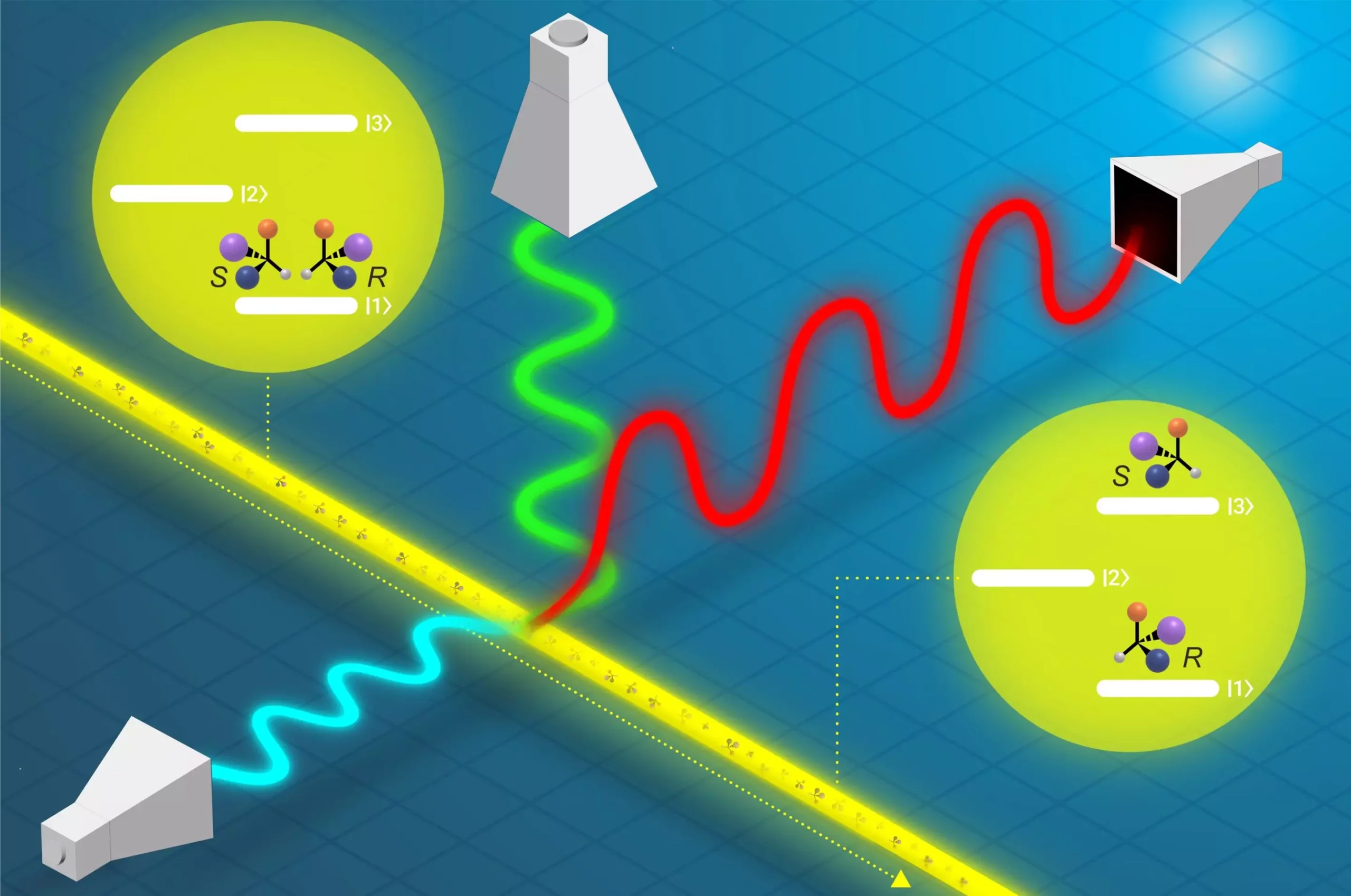A recent study conducted by the Controlled Molecules Group at the Fritz Haber Institute has pushed the boundaries of quantum state control in chiral molecules to new heights. Led by Dr. Sandra Eibenberger-Arias, the team achieved an impressive near-complete separation in quantum states, challenging previously held beliefs about the limitations of this type of control.
Chiral molecules, which are essential building blocks of life, exist as non-superimposable mirror image versions known as enantiomers. The ability to control these molecules and their quantum states has far-reaching implications, from spatial separation of enantiomers in the gas phase to investigating the origins of life’s homochirality. Until now, scientists believed that achieving perfect control over these molecules’ quantum states was theoretically possible but practically unattainable. However, the team at the Fritz Haber Institute has defied this belief by demonstrating a remarkable 96% purity in the quantum state of one enantiomer, bringing researchers closer to the goal of 100% selectivity.
By creating optimal experimental conditions and utilizing tailored microwave fields in conjunction with ultraviolet radiation, the team was able to exert unprecedented control over chiral molecules. In their experiment, a beam of molecules with suppressed rotational motions traversed three interaction regions where it encountered resonant UV and microwave radiation. This innovative approach allowed for the near-exclusive presence of the selected enantiomer in chosen rotational quantum states, showcasing a significant advancement in molecular beam experiments.
The groundbreaking study opens up exciting avenues for investigating fundamental physics and chemistry effects related to chiral molecules. The team’s method presents a unique opportunity to explore parity violation in chiral molecules, a phenomenon predicted by theory but not yet observed experimentally. The implications of such discoveries could revolutionize our understanding of the fundamental symmetries in the universe.
With the success of achieving nearly complete, enantiomer-specific state transfer in chiral molecules, researchers anticipate the widespread applicability of this method to a vast array of chiral compounds. This breakthrough discovery is poised to unlock new opportunities in molecular physics, ushering in novel research approaches and potential practical applications that were previously out of reach.
The recent study by the Controlled Molecules Group at the Fritz Haber Institute represents a monumental leap forward in the field of chiral molecules research. By demonstrating near-complete chiral selection in rotational quantum states, the team has not only defied existing assumptions but also paved the way for groundbreaking advancements in molecular physics and beyond. The implications of this study are vast, promising exciting new discoveries and applications in the scientific community.

